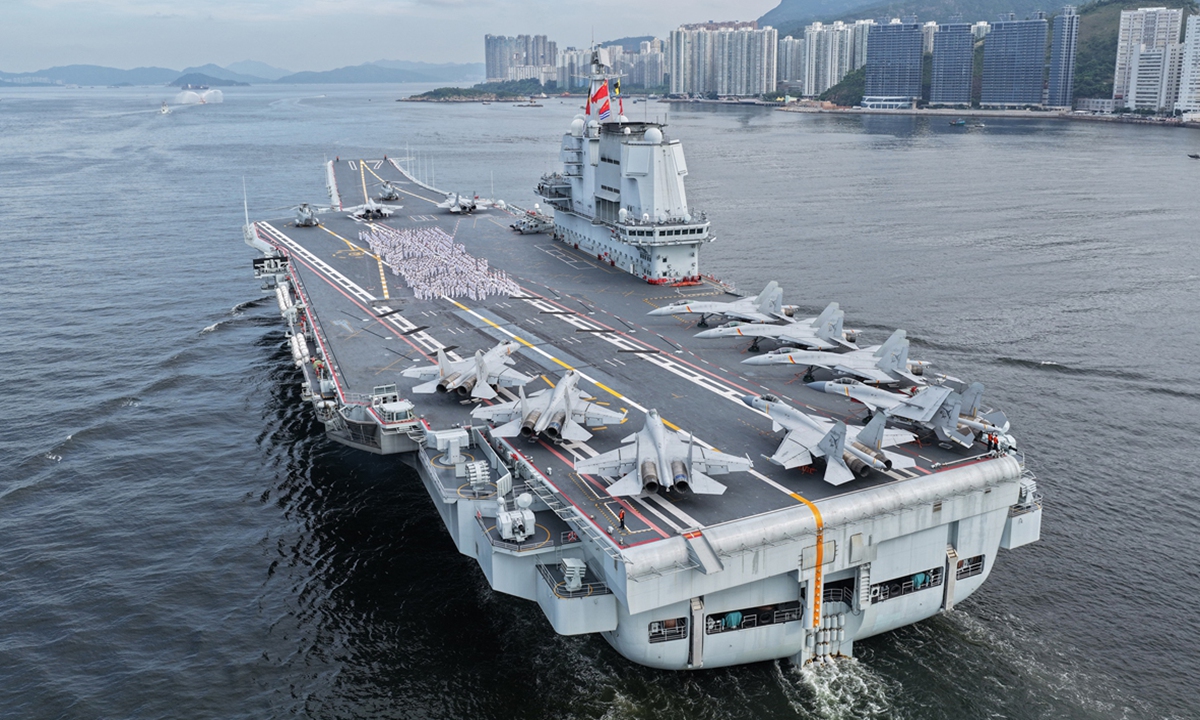Jul 09, 2025, 15:11

This photo shows J-15 and J-15T fighter jets on the deck of the aircraft carrier Shandong on July 3, 2025. A fleet of the Chinese People's Liberation Army Navy led by the aircraft carrier?Shandong?arrived in the Hong Kong Special Administrative Region on the day. Photo: Xinhua
(Global Times) A top Chinese warplane designer said that future fighter jets will incorporate unmanned systems, artificial intelligence (AI), as well as other advanced technologies, moreover, they should be produced like mobile phones. A Chinese expert said that this vision is highly forward-looking, signifying a substantial enhancement in the nation's all-encompassing capabilities across domains.
During the recent visit of the Chinese People's Liberation Army (PLA) Navy aircraft carrier Shandong to Hong Kong, the newly developed carrier-based fighter jet J-15T made its public debut on the carrier's deck, attracting widespread attention.
Sun Cong, an academician of the Chinese Academy of Engineering, also the chief designer of China's J-15 carrier-borne fighter jet, stated in an exclusive interview that unmanned system operations and AI will certainly be applied to fighter jets, the CCTV News military channel reported on Tuesday.
He explained that the J-15 focuses on energy maneuverability and weapon use, while the J-35 will emphasize informationization and speed — prioritizing rapid response throughout the entire process from detection and engagement to withdrawal.
"With advances in technology, China's carrier-based aircraft will become more intelligent in the future," Sun noted.
Sun also said that the production speed of aircraft will accelerate in the future, noting, "We need to produce aircraft the way we produce mobile phones."
He added that the analogy of producing aircraft like mobile phones means all functions will be software-based, with the platform and functions designed independently. When the platform is modified, integrating the functions will result in something new, Sun said.
Highlighting the need to accelerate aircraft development, the chief designer noted that the research and development cycle for an aircraft typically spans roughly 15 to 20 years. "But if other countries start introducing new innovations every five years, we'll quickly fall behind at our current pace," he warned.
Wang Ya'nan, chief editor of Beijing-based Aerospace Knowledge magazine, told the Global Times that Sun's remarks are highly forward-looking, as they offer a phased target for development.
This means future aircraft would need highly standardized interfaces to allow for plug-and-play upgrades, as well as open architectures with both forward and backward compatibility, according to Wang.
Enabling aircraft to upgrade like mobile phones implies a major leap in capabilities across all aspects of the aircraft's complex systems, enabling rapid and flexible system-wide iteration, the expert noted.
Community login






Add a comment